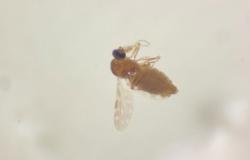Childhood obesity has become a growing concern around the world, with alarming rates of increase in several regions. In addition to immediate physical consequences such as type 2 diabetes, cardiovascular disease and metabolic disorders, childhood obesity is associated with a variety of long-term health problems, including spinal complications.
A study by the Brazilian post-PHD in neurosciences, Dr. Fabiano de Abreu Agrela Rodrigues, and orthopedic doctor Luiz Felipe Chaves Carvalho, sought to better understand the interactions between childhood obesity, neuroscience and spinal health, to address this issue often not addressed in medical literature. Entitled “A Neuroscientific Perspective on Obesity in Childhood and Adolescence and its Impacts on Spinal Health”, the research is available for reading in Vitalia: Revista Científica de Salud y Desarrollo Humano.
According to PHD Fabiano, obesity is characterized as a condition of excessive accumulation of body fat, which can have significant adverse effects on the individual’s health. “Physiologically, obesity is the result of an imbalance between calorie intake and the body’s energy expenditure. Occurring when the individual consumes excess calories, that is, in high quantities that the body cannot burn over time. Furthermore, genetic, environmental, behavioral and metabolic factors can contribute to the development and worsening of obesity”, says Abreu.
According to Agrela, cardiovascular diseases are an important risk factor for the development of obesity, affecting the heart and blood vessels. “Obesity, especially abdominal obesity, is a risk factor for type 2 diabetes, due to its association with insulin resistance. Respiratory disorders are also common in obese individuals, due to compression of the lungs and airways”, highlights the professional.
What many don’t know is that according to research, excess weight can cause additional pressure on the joints and supporting structures of the body, increasing the risk of orthopedic conditions such as osteoarthritis. “This happens because the additional weight exerted on the body’s joints and support structures can overload them, resulting in excessive wear and tear over time. This added pressure can lead to damage to the cartilage in your joints, causing inflammation and pain, especially in areas like your knees, hips, and spine. Over time, this continuous overload can contribute to the development of orthopedic conditions, such as osteoarthritis, which is a degenerative joint disease”, says Luiz.
In childhood obesity, factors such as inadequate eating habits and lack of physical activity are the main causes. The National Food and Nutrition Policy identifies obesity as a public health problem that requires integrated interventions from different health sectors.
To prevent childhood obesity, an integrated approach is needed, including healthy eating, regular physical activity and educating families about the risks of obesity. Socioeconomic factors, such as limited access to healthy foods, can also contribute to less healthy food choices.
Obese children and adolescents may also face psychosocial problems, such as bullying and low self-esteem, which can lead to the development of disordered eating disorders. A holistic approach that involves support from family, school and healthcare professionals is important to promote a positive body image and healthy self-esteem. Childhood obesity is influenced by an interaction between genetic, environmental, behavioral and neurobiological factors.
Neurotransmitters play an important role in regulating appetite and eating behavior. Furthermore, genetic factors also play a significant role in body weight gain and regulation of metabolism, which may affect the predisposition to obesity. The researchers highlight that understanding the mechanisms underlying obesity in childhood and adolescence, including genetic, environmental and neurobiological factors, is essential to develop effective strategies for preventing and treating this public health condition.
About Dr. Fabiano de Abreu Agrela Rodrigues
He is a Post-Doctorate in Neurosciences elected member of Sigma Xi, member of the Society for Neuroscience in the United States, member of the Royal Society of Biology in the United Kingdom and of the APA – American Philosophical Association also in the United States. Master in Psychology, Degree in Biology and History; also a Technologist in Anthropology and Philosophy with various national and international training in Neuroscience and Neuropsychology. Member of the high IQ societies Mensa, Intertel, ISPE High IQ Society, Triple Nine Society, ISI-Society and HELLIQ Society High IQ. Author of more than 227 scientific articles and 23 books.
About Dr. Luiz Felipe Carvalho
Orthopedist specializing in spinal column, regenerative medicine using stem cells and neuroscientist. She has treated great athletes such as football player Rodrigo Dourado and Ferreirinha from Grêmio. In addition to the Uruguayan-born Argentine tennis player Pablo Cuevas, who has been undergoing stem cell treatment since 2017, greatly improving his performance, advancing in the rankings since then.
Gaúcho has in-depth knowledge of modern spinal surgical procedures and also works with minimally invasive techniques. He is a graduate of the American Academy of Regenerative Medicine (AABRM), and the Latin American group ORTHOREGEN. He is currently structuring the Regenerative Medicine service in the City of São Paulo for treatments of Osteoarthritis and chronic musculoskeletal pain.
Tags: Brazilian research seeks understand links childhood obesity spinal health
--





